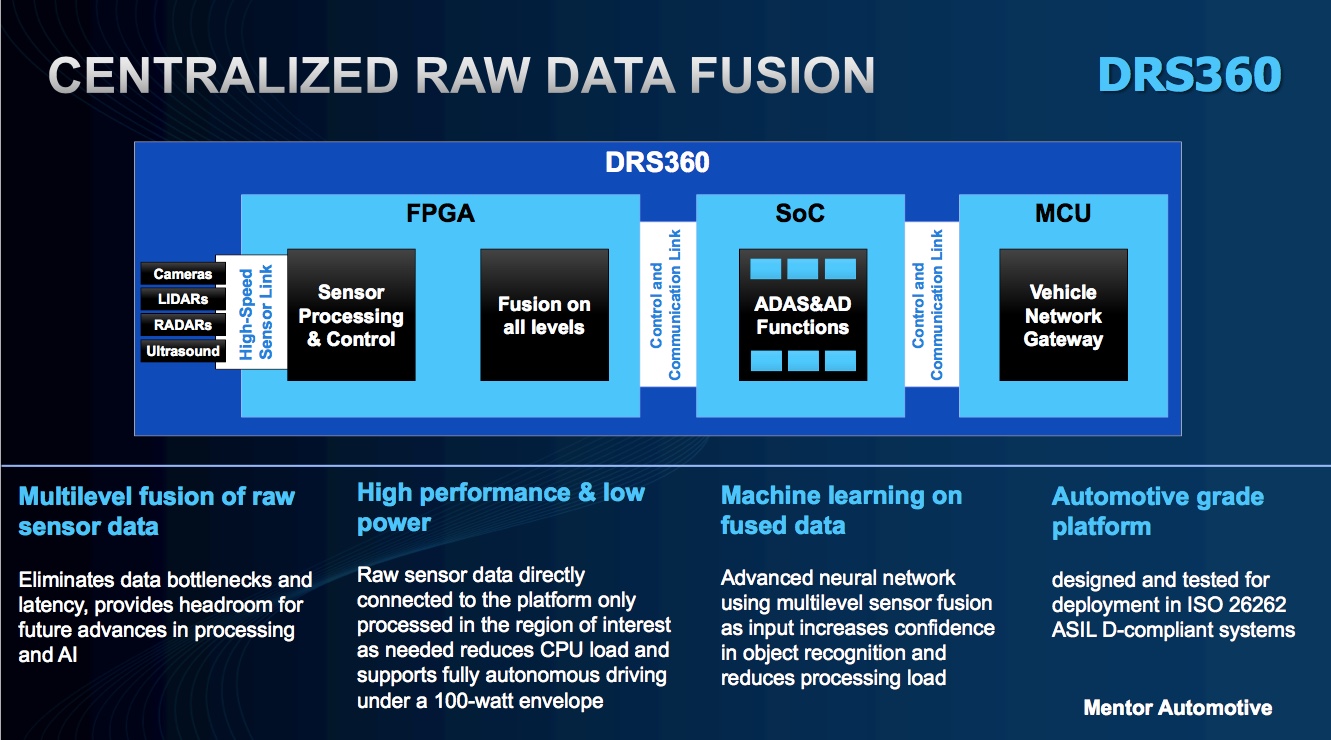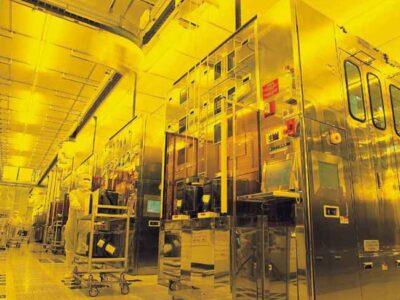
Mentor rolls computing platform for autonomous vehicles
The platform design is based on Mentor’s finding that higher degrees of autonomy for cars make things more complex in many ways: The amount of data that have to be processed is growing disproportionately with the various levels of autonomy while at the same time the requirements as to functional safety and low latency decisions are getting increasingly tough. Therefore, Mentor designed the DRS360 as an open platform with vast configuration options in terms of hardware as well as of software. To meet the diverging expectations of tier one suppliers with their different microprocessor strategies, the configurability of the platform goes far enough to allow customers to use different processors – while Mentor avoided to drop names, it is obvious that tier ones and OEM customers will be able to implement “their” version with Renesas, Infineon or Nvidia processors, at least at the stages of ADAS functions and Vehicle Network Gateway (see fig. 1).

Mentor Automotive’s DRS360 computing platform for automated driving
The platform incorporates a multi-stage approach, much like other central computing platforms (Audi’s zFAS, for instance). It however is higher integrated and will consume not more than 100 watts, promised Mentor Automotive Market Development Andrew Patterson during the introduction.
A basic design principle of the DRS360 platform is to avoid latencies as far as possible. Therefore, the front end will connect to the variety of sensors through dedicated, optimized channels and follow the idea of a powerful, fast pre-processing stage. To avoid latencies, Mentor avoids concepts like using an Ethernet link (not even real-time Ethernet) for the connection between the sensor and the platform. This is remarkable because recent concepts aired by companies like Infineon and NXP provide a decentralized signal preprocessing unit for a radar sensor array that then could be linked to the ADAS instance through Ethernet. Foregoing of preprocessing and data compression as well as using a fast dedicated sensor connection will reduce the latency and thus guarantee more exact processing results, Patterson argued.
At the Sensor Fusion stage, the platform employs a Xilinx Zynq Ultrascale MPSoC FPGA for high processing power and ample room to implement customer-specific sensor fusion algorithms. The Sensor Fusion stage is followed by an ADAS and Automated Driving stage where customers can implement their algorithms that enable car-specific driving experience as well as processing functions relevant to functional safety. This next and final stage will contain the Vehicle Network Gateway that controls all further data communications inside of the car and to the outside world. In two stages, Mentor expects that the customers will widely use the silicon of their choice. Therefore, the platform has the character of a construction kit, explained Stephan Böhm, Technical Director of Mentor Automotive’s Embedded Sales Channel. Nevertheless, Mentor will offer a preconfigured version to enable design engineers to quickly create proof-of-concept implementations.
The DRS360 platform will cover all degrees of automated driving, and in particular the highest level 5 for cars that drive completely autonomously. Since all other levels can also be addressed, the platform will be available already against the end of the current year. After all, the automotive industry is already busy to design computing platforms for Level 2 to Level 4 ADAS systems which include automated lanekeeping or automated driving on highways.
Related articles:
Mentor inlcudes Ethernet into AUTOSAR tools
Mentor tackles heterogeneous multicore SoC embedded software development
Siemens rounds off design platform with Mentor expertise
Elektrobit rolls four more software modules for autonomous driving
BMW will soon test autonomous cars – with a little help from Intel and Mobileye
Audi rainmaker sketches new computing architecture for cars
 If you enjoyed this article, you will like the following ones: don't miss them by subscribing to :
eeNews on Google News
If you enjoyed this article, you will like the following ones: don't miss them by subscribing to :
eeNews on Google News



